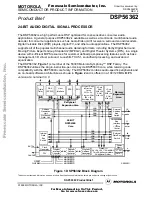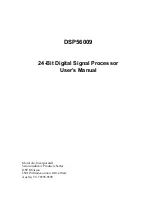
Remote Control Processor
XP-6
COnneCtInG IR emItteRs tO OutPut PORts
The multi-purpose output (MPIO) ports on the XP-6 are compatible with
industry standard infrared emitters and infrared repeating systems. Each
output port is capable of driving up to four infrared emitters directly.
More than four infrared emitters requires an amplified connecting block. A
connecting block can be wired up to 000 feet away from the XP-6 using
#22 AWG (minimum) wire.
InFRaRed HIGH Out
The XP-6 is compatible with industry standard IR connecting blocks.
Connect the HIGH OUT and GROUND terminals to the signal input and
ground terminals on the connecting block. This is useful if you have many
devices to control, or you want to extend control into other rooms.
This output has short circuit protection, but does not provide a series
resistor for current limiting.
It should not be connected directly to IR
emitters
.
adJustInG IR OutPut GaIn
The IR output gain can be separately adjusted for each of the six output
ports. The XP-6 is shipped with the IR gain set to the optimum level for
most equipment, and it should only need to be adjusted if the attached
equipment is not responding reliably.
If adjustment is needed, rotate the IR output controls on the front of the
XP-6 clockwise for higher output power, or counter-clockwise for lower
output power.
InFRaRed ReCeIVeRs
The XP-6 is compatible with industry standard IR receivers, repeater
systems, and keypads. Connect the SIGNAL INPUT, GROUND, and +2VDC
(if power is needed) terminals on the XP-6 to the signal out, ground, and
power (if needed) terminals of the desired device.
If the XP-6 sees an incoming system trigger code with a matching zone ID,
it will execute the command or macro associated with that code. The XP-6
can also be programmed to either block or pass miscellaneous IR data
through its output ports.
RF ReCeIVeRs
The XP-6 is compatible with RTI RF receiver modules (e.g. RM-). Up to
0 RM- receiver modules can be connected with a maximum total wire
run of 000 ft. Follow the guide included with the modules for installation
instructions.
CHaPteR 3 | InstallatIOn and OPeRatIOn














































